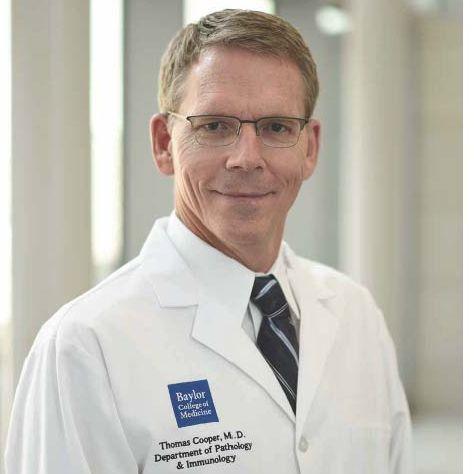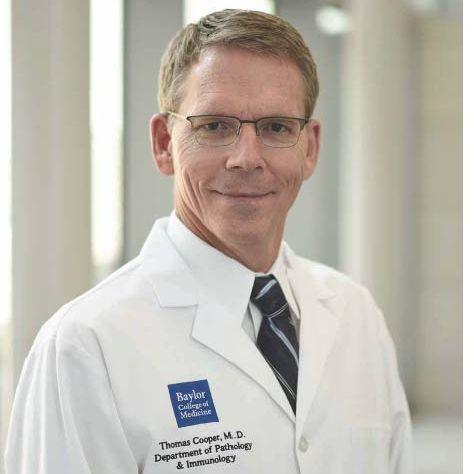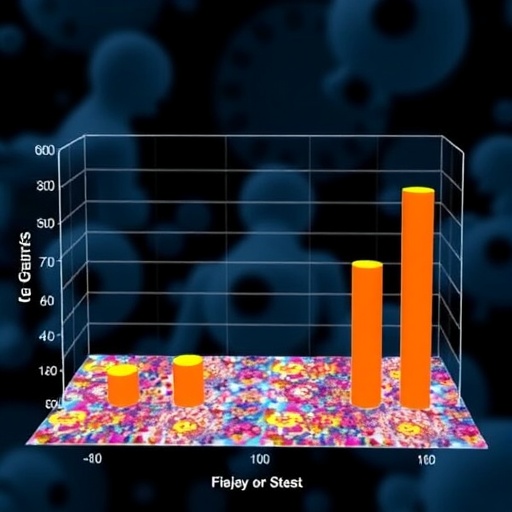
Credit: Baylor College of Medicine
A team of researchers at Baylor College of Medicine reveals new insights into what can be causing life-threatening cardiac-related events in myotonic dystrophy type 1(DM1). Published in the Journal of the American Heart Association, the study shows that reproducing in mice the missplicing of gene Scn5a observed in patients with the condition recapitulates defects in cardiac function present in the patients. The findings highlight a non-mutational mechanism that is relevant to DM1 and possibly other types of arrhythmias and open the possibility for novel interventions.
"Cardiac events in DM1 are the second-leading cause of death in the disease. More than 50 percent of patients with DM1 have cardiac electric conduction defects and arrhythmias, but it is not clear what causes them," said corresponding author Dr. Thomas A. Cooper, professor of pathology & immunology, of molecular and cellular biology and of molecular physiology and biophysics at Baylor College of Medicine.
DM1 is a progressive multi-systemic disease and the most common form of muscular dystrophy in adults, affecting 1 in 8,000 individuals worldwide. A main characteristic of the disease is the disruption of a process called alternative splicing.
During normal development, alternative splicing mediates the switch of protein forms expressed in the fetus to different forms of the same protein expressed in the adult. In DM1, a subset of genes fails to undergo the normal alternative splicing transition to the adult form. Consequently, adult tissues express fetal forms of some proteins that cannot fulfill the functions required in an adult tissue.
One of the proteins that is misspliced in DM1 is Scn5a, a sodium channel that is strongly expressed in heart muscle and is critical for normal electrical activity of the heart. Malfunctioning sodium channel proteins in cardiomyocytes are associated with arrhythmias and cardiac dysfunction contributing to sudden cardiac death. Although these studies show an association between fetal forms of Scn5a and cardiac defects in DM1, they do not indicate that one causes the other.
To determine whether fetal forms of Scn5a can cause cardiac defects similar to those observed in DM1, Cooper and his colleagues expressed the fetal forms in adult mice and then extensively characterized cardiac function.
Missplicing Scn5a alters cardiac function
Using CRISPR technology, Cooper and his colleagues removed the gene segment containing the adult form of Scn5a. Consequently, the developing mice expressed fetal Scn5a when they became adults. The researchers then applied a variety of assays to measure alterations of the electrical conduction characteristics of the heart, including conduction velocity and susceptibility to arrhythmias.
"We found that the hearts of mice expressing the fetal form of Scn5a behaved differently than those of normal mice," said first author Paul D. Pang, predoctoral fellow in Baylor's Integrative Molecular and Biomedical Sciences Program. "Conduction velocity was slower and arrhythmias were more likely to occur in the hearts expressing fetal Scn5a."
"We reproduced in mice the defects in heart function observed DM1 by making this change in alternative splicing, which supports the hypothesis that alternative splicing of Scn5a is a contributing factor in the cardiac problems associated with the disease and maybe also in arrhythmias linked to other conditions," said Cooper, who also is the S. Donald Greenberg and R. Clarence and Irene H. Fulbright Professor and a member of the Dan L Duncan Comprehensive Cancer Center at Baylor."
Next, the researchers plan to explore the possibility that changing the fetal form of Scn5a back to the adult form would help reinstate normal heart function.
###
Other contributors of this work include Katherina M. Alsina, Shuyi Cao, Amrita B. Koushik and Xander H.T. Wehrens, all at Baylor College of Medicine.
This study was funded by the National Institutes of Health (T32HL07676, F31HL140879, R01HL045565, R01AR045653, R01AR060733, R01HL089598, R01HL091947 and R01HL117641), the Muscular Dystrophy Foundation, the American Heart Association (13EIA14560061) and Saving Tiny Hearts Foundation.
Media Contact
Allison Mickey
[email protected]
713-798-4710
@bcmhouston
https://www.bcm.edu/news
Original Source
https://www.bcm.edu/news http://dx.doi.org/10.1161/JAHA.118.010393





